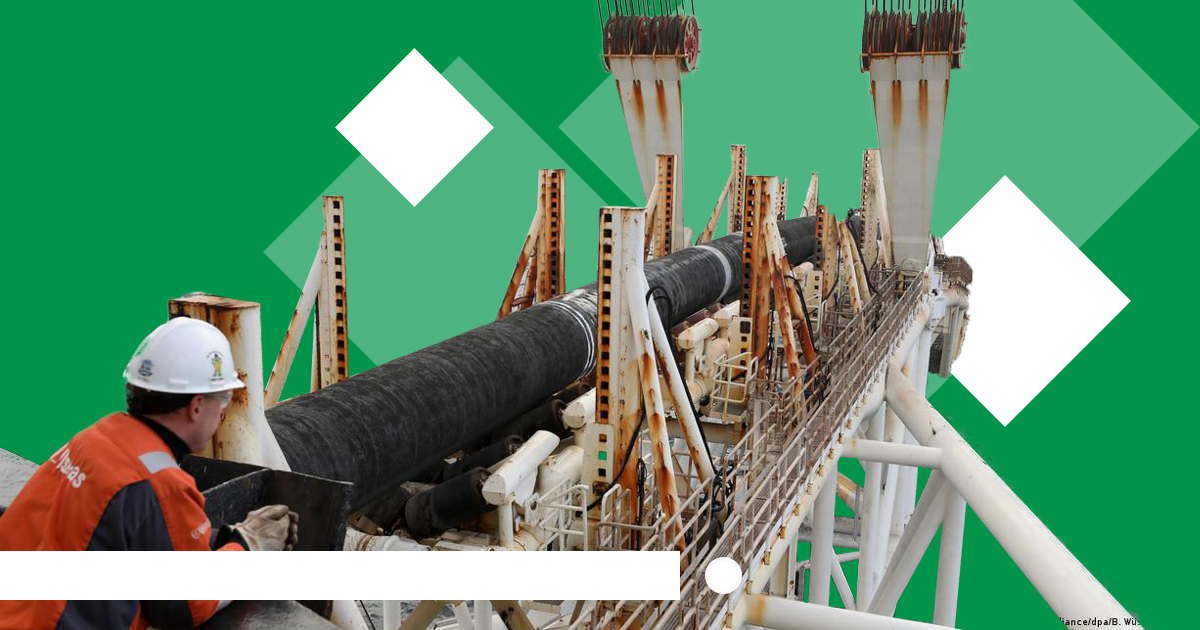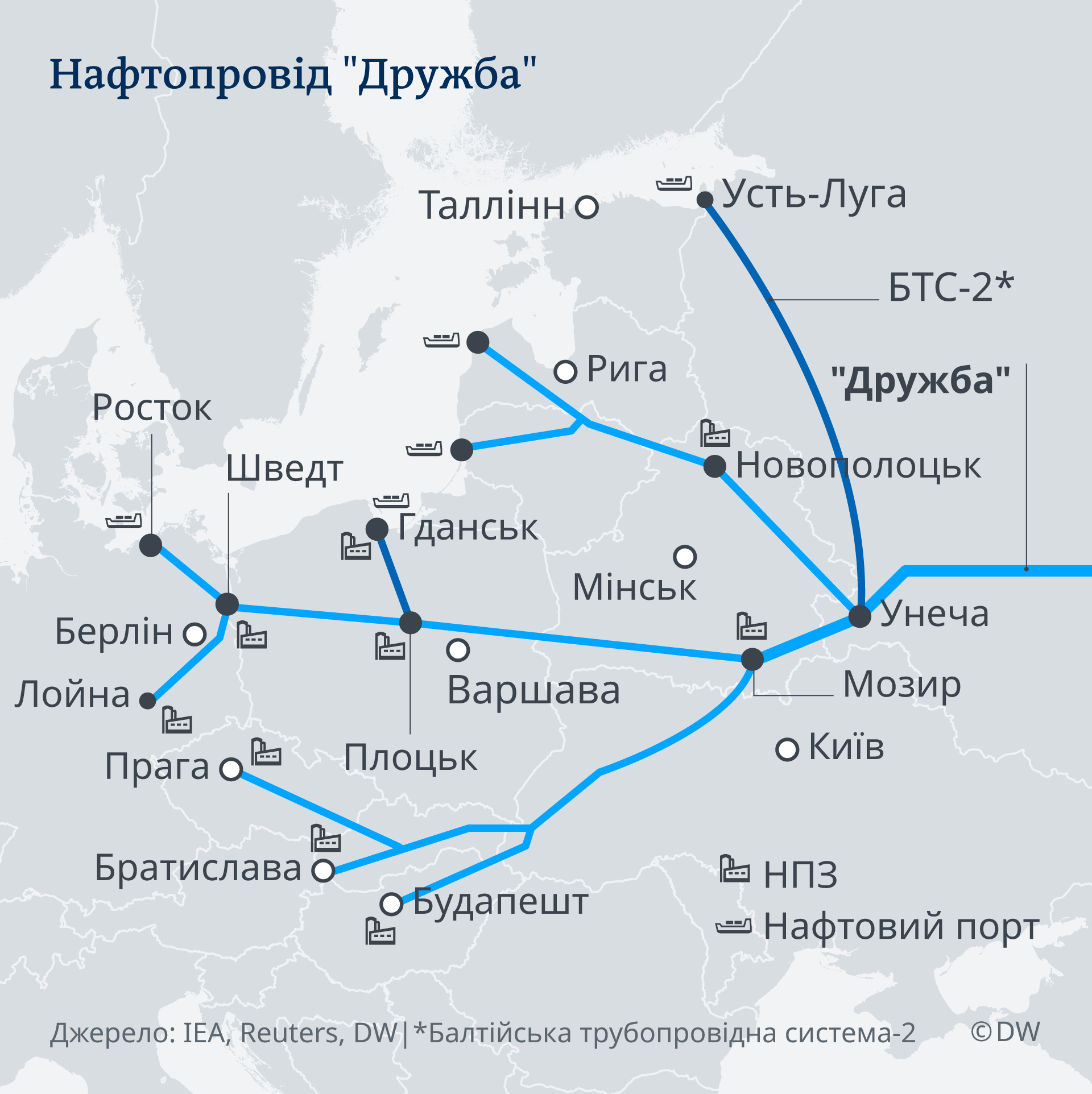Rubryka explains how the world can cope with the consequences of an accident and what to be prepared for.


What is the problem?
On September 29, the most extensive gas accident in history occurred at the underwater part of the Nord Stream gas pipeline located in the Baltic Sea economic zones of Denmark and Sweden. According to preliminary data, it was caused by underwater explosions.
This week, the focus shifted from the Nord Stream accident to russia's new terrorist attacks in Ukraine. But on October 11, there was another accident—on the Druzhba oil pipeline, which goes from russia to Germany. There was a big oil spill. The substance got into a cornfield. As reported by RMF FM, three tankers collected spilled oil at the spill site. The spill spread partly on the territory of the livestock complex. The nearest buildings are far from the leak location, but the leak itself will cause damage to the environment.


What is the risk of both accidents? We will explain further.
Leaks on gas pipelines can significantly harm the environment, causing initial damage, primarily related to the explosion itself, and long-term damage, the consequences of which can be felt even on the scale of the entire planet.
Ecologist, coordinator of the expert department of the Ukraine War Environmental Consequences Working Group (UWEC), and Doctor of Environmental Sciences Yevhen Symonov believes that the damage was caused in the Baltic Sea—in the air and even on land. In one of the interviews, he called the accident on the Nord Stream pipeline the most significant gas accident in history." Rubryka also contacted an environmental researcher to discover how dangerous this accident is and how we will now solve new ecological problems related to gas pipeline explosions.
Yevhen Symonov says the explosive wave caused the first damage. It killed the biota, and the methane dissolved in the water poisoned some nearby marine animals.
The explosion power was such that it could damage the shell of chemical munitions sunk after the Second World War. This could have led to chemical contamination, but fortunately, it did not happen:
"Unfortunately, I didn't get the impact assessment [of the climate in the event of a gas pipeline accident – ed.] that my colleagues did. My colleagues worked on other aspects of this assessment. Estonian experts refer to it the most, and according to their version, there will be no long-term consequences if the old chemical bombs scattered all over the sea are not damaged. Other experts report that the bombs are concentrated 40-50 kilometers from the place of the explosion. Still, we learn about this only from Swedish or Danish monitoring because this is their territory," the expert comments.
Was it possible to make tests and investigate the accident's impact on the biota directly at the site? No, because no one swam straight to the area around the leaks: the accident is a significant threat to navigation safety as long as the flammable methane gas is released.
In addition, methane is a much more dangerous greenhouse gas than carbon dioxide. According to Symonov, this is the most significant one-time methane emission. Still, its impact on global warming and ozone layer destruction is relatively small compared to routine leaks throughout the year. The volume of methane that can enter the atmosphere from the Nord Stream pipelines is a "fraction" of the annual emissions of this gas in the world.
But not everyone agrees with this opinion. For example, representative Sascha Müller-Kraenner, CEO of Deutsche Umwelthilfe (German environmental organization), said in an interview that methane is a greenhouse gas with 80 times more significant greenhouse effect than the CO2 molecule.
"What that means is that you have a volume that is coming out of the pipeline that equals half of the annual emissions of a country like Denmark, or when you translate it into CO2, it equals emissions that are higher than the emissions of one of the larger coal power plants that we have in Europe," the expert said.
Another important consequence of the accident, as Symonov says, is the gas price increase, which will lead to cutting down forests and starting to use peat. Both types of fuel are harmful to the environment:
"I am most worried about wood. In Europe, there is not much of it at all, and there they have just begun to abandon the extremely harmful notion of wood biomass as a renewable energy source. Burning wood biomass produces more polluting greenhouse gases than burning other fuels. Unfortunately, there is still peat, which is actively used in a range of countries in heating: peat is the most valuable ecosystem of upland bogs. I am terrified that if they start actively using wood and peat now. It will hit the forest and swamp ecosystems very hard."
According to the expert, those countries that offer their wood may suffer:
"They will start cutting wood around them. It will happen in various countries. Second, they will start importing from the nearest countries where there is an offer. These can be very distant countries. I was once surprised to discover that some of the converted coal-fired power plants in Europe that started to run on wood were sourcing from the swamp forests of North Carolina in the USA. The forests of Eastern Europe will be at great risk. Those countries that do not have the opportunity to buy a replacement will be hit the hardest. I have huge fears about Ukraine and Moldova."
What is the solution?
After the explosion, the idea of burning the released methane and turning it into carbon dioxide, which is much less dangerous for global warming, was discussed. However, Symonov believes that for security reasons, no one will do this, as he does not rule out victims and destruction:
"The gas could have been set on fire. Europeans were afraid. This would lead to an explosion of a tremendous force, and it is challenging to predict how powerful it will be. Second, it is a responsibility, and the idea of placing the "mother of all bombs" in the Baltic Sea in a place where there is active shipping and inhabited islands is scary. It's really dangerous."
The best decision that the German side and russian Gazprom could make is to drain the gas from the pipe where possible, says the head of the German environmental protection organization Deutsche Umwelthilfe Sasha Müller–Krenner, make a "torch" and set it on fire. According to him, this would turn methane into safer CO2. But this did not happen, perhaps due to bureaucratic issues and the bankruptcy of Gazprom.
So it will be necessary to look for new solutions. But if the accident does not happen again on another part of the gas pipeline, the "quick" consequences will be short-lived:
"The gas coming out of the pipe can cause unpleasant consequences for organisms. As soon as the gas stops flowing, the concentration will decrease, and everything will return to a relative norm. Methane, like any gas, will rise to the surface above the water, and bacteria will eat the gas that manages to dissolve in the water. They will turn it into something and also into carbon dioxide—this usually happens with methane, which is released in reservoirs," Symonov comments.
Oil, although an organic substance, is a very unpleasant pollutant. It penetrates far and deep into the soil and spreads well into vertical water streams. The result is severe pollution and poisoning by oil products of both soil horizons and water sources:
"In this situation, it is crucial to know where they manage to limit the spill and how it is connected with water bodies. Oil-soaked soil will turn into a pollutant. Most likely, it will have to be cleaned and buried somewhere. The second option is to use bacterial complexes that help quickly break down oil. But this is rather an anecdotal option," Symonov comments, meaning that some technologies work better in the laboratory than in practice. But removing and subsequently burying toxic soils is an entirely practical option.
Власним досвідом та практичними порадами з “Рубрикою” поділилася корекційна педагогиня, психотерапевтка, мама дітей з розладами… Читати більше
Вже під час війни Україна використовує штучний інтелект (ШІ) як потужний інструмент для відбудови та… Читати більше
У Житомирській обласній філармонії ім. С. Ріхтера пів року працює студія PНIL-ART. Тут професійні артисти… Читати більше
In our conversation, Dmytro Syrykh discusses the work of Ukraine's Energy Efficiency Fund amid the… Читати більше
“Рубрика” розповідає про рішення з Закарпаття, що стимулює донати та волонтерську діяльність. Читати більше
On January 20, 2025, Donald Trump was sworn in as the President of the United… Читати більше
Цей сайт використовує Cookies.